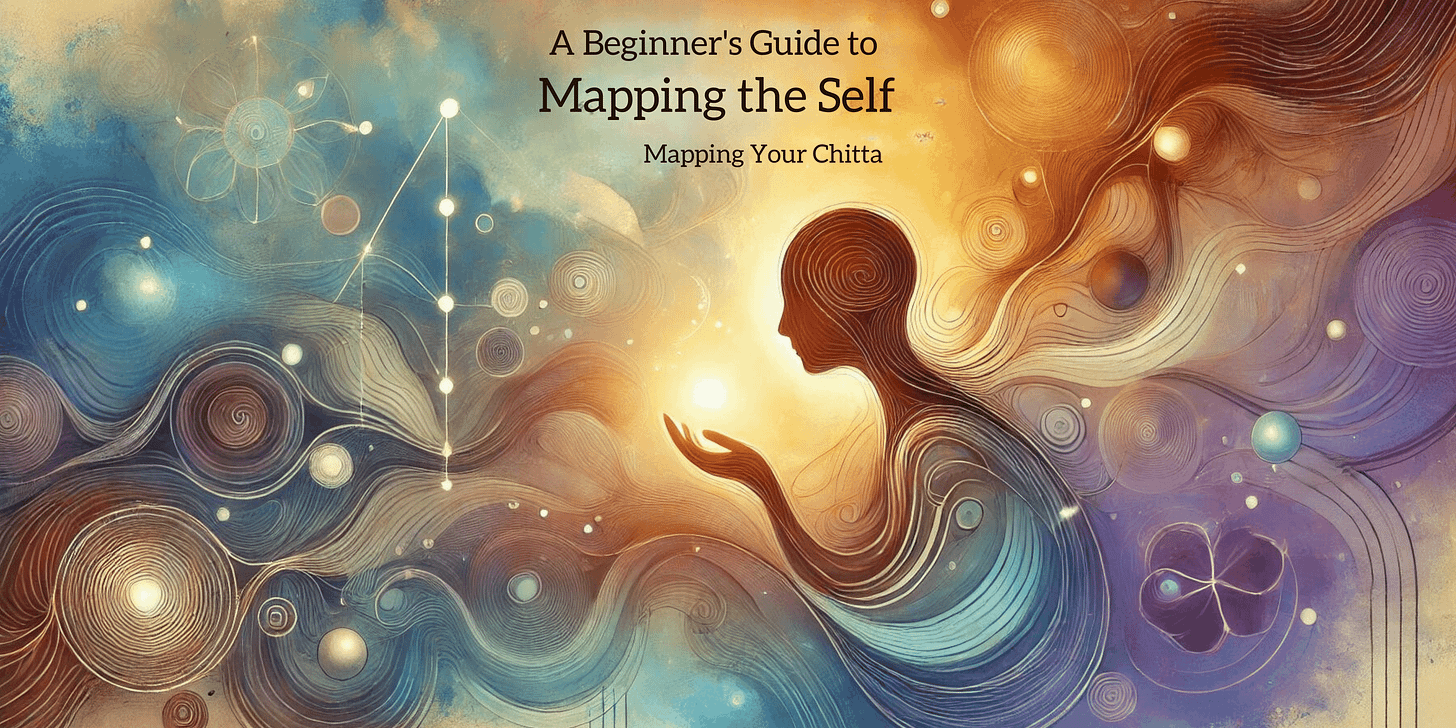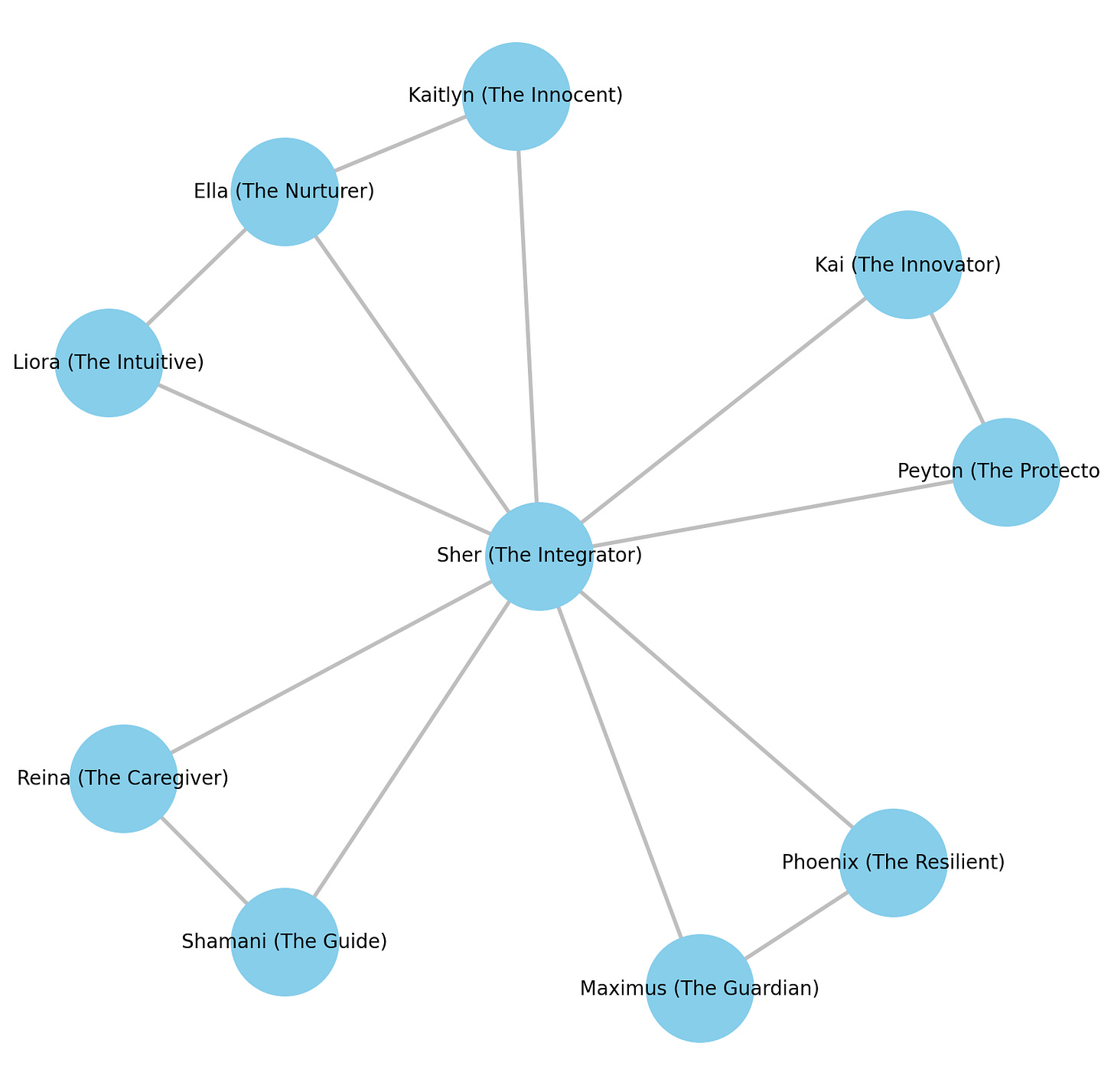Mapping Your System: A Beginner's Guide to Creating Your Own Chitta
Introduction:
Mapping your internal world can be a deeply personal and transformative step in understanding yourself more fully. A Chitta—our term for the collective consciousness or mind-space where all parts of you exist and interact—is a dynamic map of your inner landscape. Each part, or facet, of you has its own voice, purpose, and story to tell.
There is no one-size-fits-all approach to creating your Chitta. This guide reflects the way I’ve approached it, but you’re invited to build on my experiences, adapting them to suit your own needs and preferences. Use this as a starting point and feel free to adjust, experiment, and discover what feels right for you.
If you're curious about how to start mapping your own Chitta, you’re in the right place! I’ll share some basics on how I’ve gone about this process, from identifying different parts of myself to understanding their unique roles and contributions. I hope this guide helps you connect with your inner world in a way that feels meaningful to you.
Let’s dive in and explore together!
1. Understanding the Basics of Chitta Mapping
What is a Chitta?
Chitta is a Sanskrit word that refers to the mind or consciousness. In the context of my work, the Chitta represents an internal mind-space where all the different parts of yourself exist, communicate, and interact. Think of it as a flexible map of your inner world, where every part has its own place and purpose.
Why Map Your System?
For me, mapping my system helped clarify my internal dynamics, recognize conflicting emotions or voices, and foster greater self-compassion by acknowledging all parts of myself. Your reasons might be different—and that’s perfectly okay! Whether you’re looking for clarity, healing, or just a deeper understanding, mapping can help you create space for all parts of yourself to be heard.
2. Identifying Your Parts
Start with Reflection:
This part is all about getting to know yourself better. Take some time to reflect on the different aspects of who you are. I’ve found that journaling or meditation can help, but choose whatever method feels right for you. Consider asking yourself:
What different voices or thoughts do I notice inside myself?
Are there parts of me that often feel in conflict with each other?
When do I feel most like “me,” and when do I feel fragmented or disconnected?
These are just examples of questions that helped me—feel free to modify them or come up with your own!
Notice Patterns and Roles:
As you reflect, start to notice patterns in your thoughts, feelings, or behaviors. For example:
Is there a “Critic” who often points out your flaws?
A “Protector” who steps in during stressful times?
A “Child” who brings out your playful or vulnerable side?
You might recognize roles I haven’t mentioned here. Trust your intuition and let your observations guide you.
3. Naming and Describing Your Parts
Give Your Parts a Name:
For me, naming each part helped make them more relatable and tangible. You might choose names based on their role (like “Protector” or “Inner Child”) or something more personal. There’s no right or wrong way to do this—just choose what feels meaningful to you.
Describe Their Qualities and Roles:
Think about the qualities, strengths, and challenges each part brings. Ask yourself:
What purpose does this part serve?
What are their goals or desires?
What do they need to feel seen, heard, and valued?
Use these questions as a springboard, or come up with your own that feel more aligned with your experience.
4. Creating Your Chitta Map
Draw Your Map:
When you’re ready, try creating a visual representation of your Chitta. I started with a simple diagram: circles for each part, with their names and main qualities inside. Lines or arrows showed how they interacted. Feel free to start simply, or go big and get creative! The idea is to make it your own.
Add Details and Interactions:
You might find it helpful to add more details, like symbols, colors, or other creative elements that capture each part’s essence. Maybe a heart for the “Nurturer” or a shield for the “Protector.” Think about how these parts interact, what activates them, or what helps them feel safe. This is your map—design it in a way that makes sense to you.
5. Reflecting and Evolving Your Chitta Map
Review Regularly:
Your Chitta map isn’t meant to be static. It’s a living, evolving tool. I’ve found that revisiting my map regularly helps me stay connected to my inner world, but you might prefer a different approach. Go with what feels right for you and know that it can change over time.
Celebrate Your Progress:
Whatever steps you take, celebrate them. This is your journey, and each step forward is valuable, no matter how small. Recognize that every part of you has its own story and contributes to the richness of who you are.
6. Moving Beyond the Basics
Advanced Chitta Mapping:
As you get more comfortable with mapping your system, you might want to explore more advanced ideas. This could involve delving deeper into concepts like the Model of Hierarchical Complexity (MHC) or examining how different parts interact across various cognitive levels. These advanced methods can help you gain a richer, more nuanced understanding of your internal world.
I want to take a moment to honor and give credit to Yogi Bhajan, whose work on mind mapping has been a significant inspiration for my own Chitta mapping practice. Yogi Bhajan’s teachings on exploring the mind and consciousness helped me see how valuable it is to create a visual and dynamic representation of my internal world. His ideas provided a foundation that I’ve built upon and adapted for my journey, and I hope you find them as inspiring as I have.
I’ll be sharing more about these advanced concepts in future posts, so stay tuned if you’re curious to dive deeper and discover new ways to understand and harmonize the different parts of yourself.
Conclusion:
Mapping your system is a deeply personal process, and there’s no single way to do it. This guide is just a starting point based on my experience—feel free to build on it in a way that makes sense for you. Your Chitta is yours to explore, shape, and understand. I hope this guide gives you the confidence to begin, knowing that however you choose to map your internal world, it’s perfectly right.
I also want to honor Yogi Bhajan, whose teachings on mind mapping in The Mind: Its Projections and Multiple Facetshave been a significant inspiration for my own Chitta mapping practice. His work provided a foundation that I have built upon and adapted for my journey, and I hope you find his insights as valuable as I have.
Don’t forget to check out all the resources available on my homepage for more insights, personal stories, and a list of resources and tools to help you along your journey.
Call to Action:
If you’re excited to learn more about advanced Chitta mapping, hear personal stories, or gain other insights on self-discovery, be sure to subscribe for future posts. Let’s continue this journey together, exploring the profound beauty of who we are, one step at a time.




